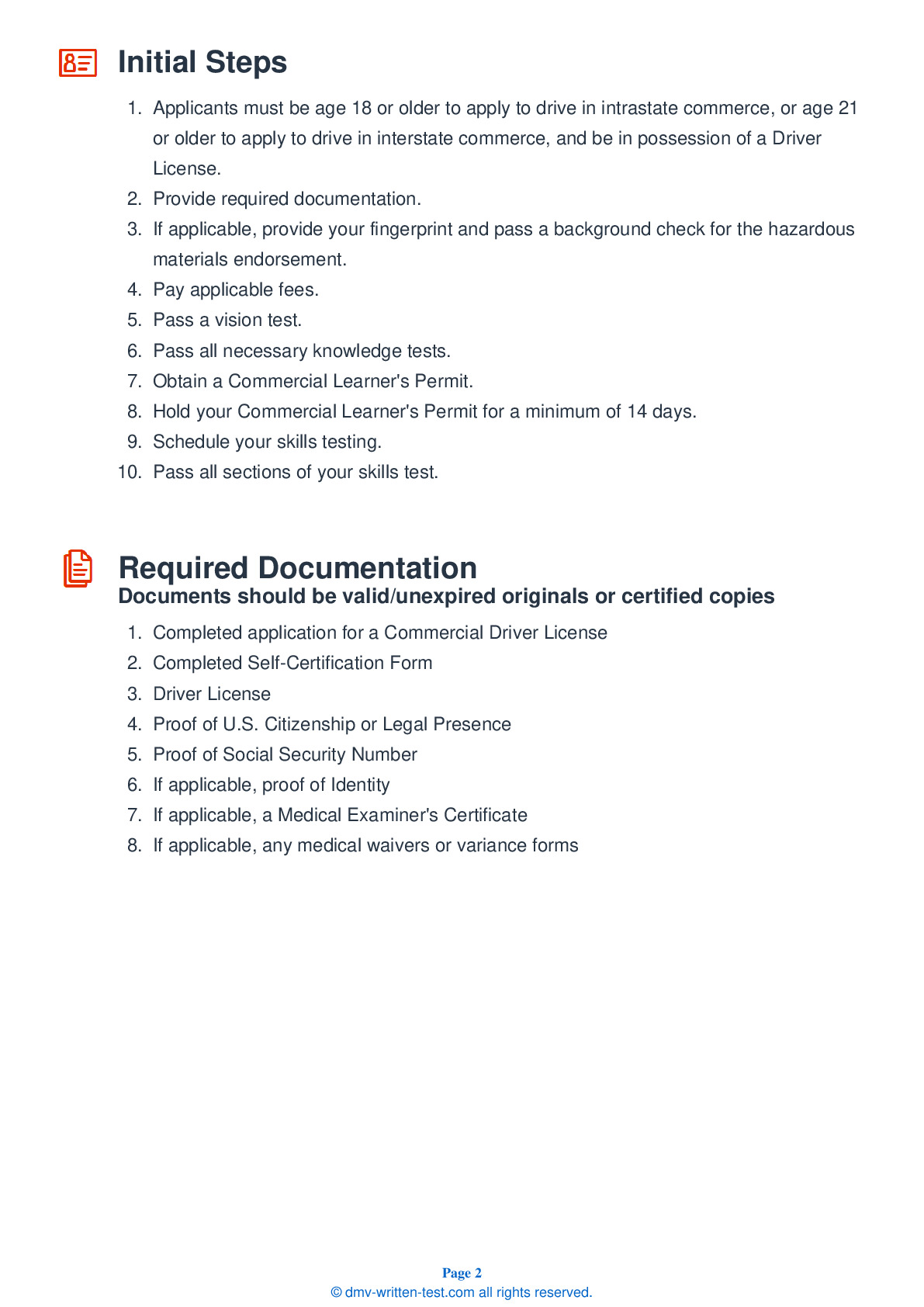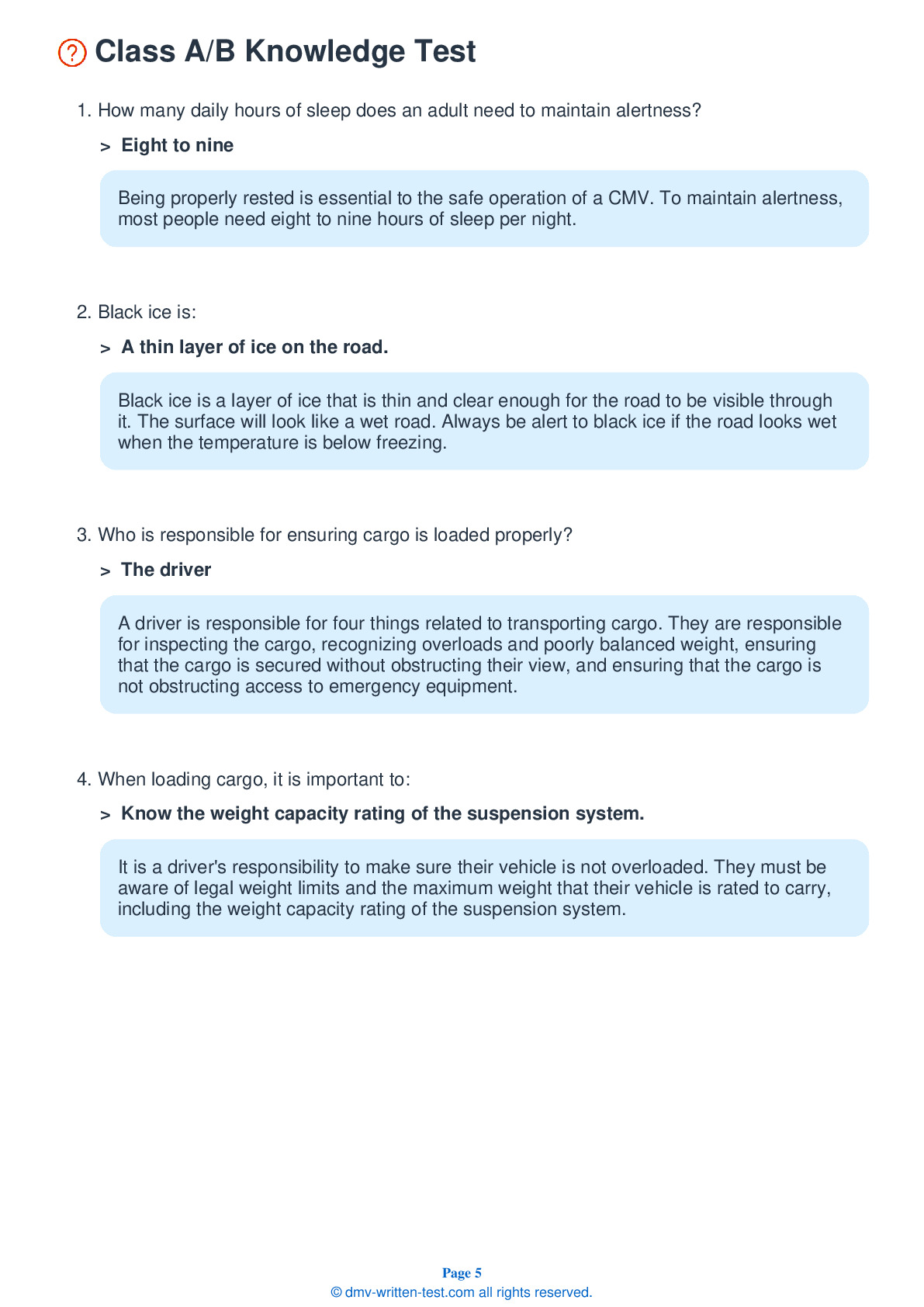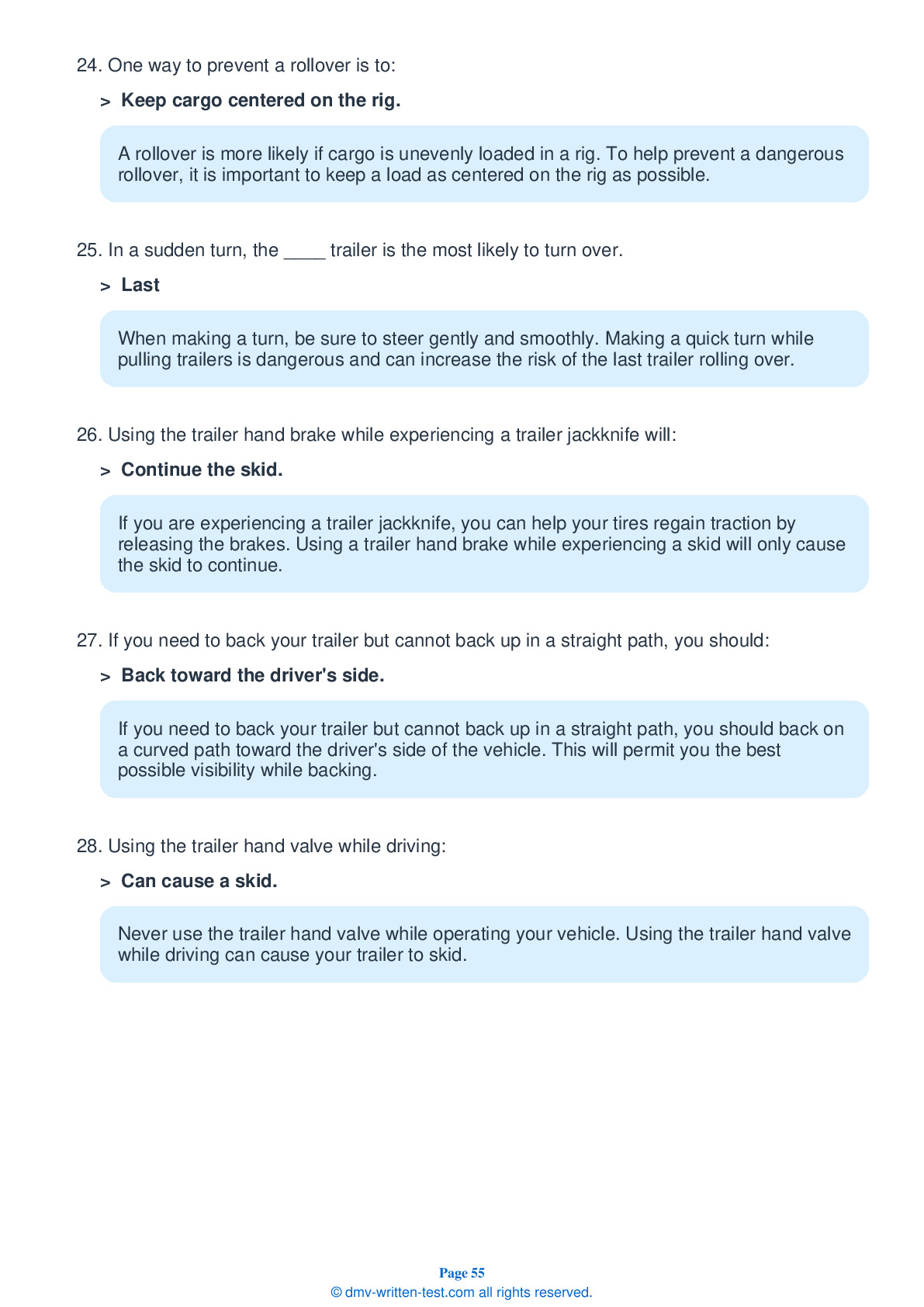Combination
All applicants who are applying for a Class A CDL should be prepared to take the Combination test. This test covers information found in Section 6 of the Alaska Commercial Driver License Manual. Section 6 provides the information needed to safely operate tractor-trailers, doubles, triples, and straight trucks with trailers. The test is made up of 20 multiple-choice questions, and applicants will need to correctly answer a minimum of 16 questions to pass. The Combination test is not a replacement for the Double/Triple endorsement test.
Number of Question
Passing Score
8. A combination vehicle has ____ air line(s).
Explanation
Every combination vehicle has two air lines: the service line and the emergency line.
9. When backing a trailer, you must turn the steering wheel:
Explanation
When backing a vehicle with a trailer, you must turn the steering wheel in the direction opposite of where you want to go. Once your trailer starts to turn, you should turn the steering wheel the other way to follow the trailer.
10. The ____ trailer is the most likely to turn over if a driver takes a turn too quickly.
Explanation
When making a turn, be sure to steer gently and smoothly. Making a quick turn while pulling trailers is dangerous and can increase the risk of the last trailer rolling over.
11. If you use the trailer hand brake while your trailer is skidding, it will:
Explanation
If you are experiencing a trailer jackknife, you can help your tires regain traction by releasing the brakes. Using a trailer hand brake while experiencing a skid will only cause the skid to continue.
12. Combination vehicles:
Explanation
Driving combination vehicles requires more skill than driving single commercial vehicles. Combinations are generally longer, generally heavier, and are more vulnerable to rollover.
13. If a load is placed on one side of a trailer, the trailer:
Explanation
Positioning the weight of a load on one side of a trailer may cause the trailer to lean to that side, increasing the risk of a rollover during turns and lane changes.
14. Combination vehicles are usually:
Explanation




